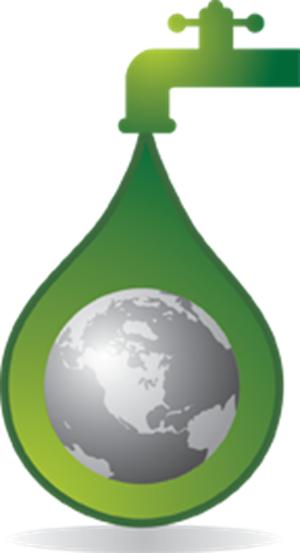- Less than 2% of the Earth’s water supply is fresh water.
- Of all the earth’s water, 97% is salt water found in oceans and seas.
- Only 1% of the earth’s water is available for drinking water. Two percent is frozen.
- The human body is about 75% water.
- A person can survive about a month without food, but only 5 to 7 days without water.
- Every day in the United States, we drink about 110 million gallons of water.
- Landscaping accounts for about half the water Californians use at home. Showers account for another 18 percent, while toilets use about 20 percent.
- Showering and bathing are the largest indoor uses (27%) of water domestically.
- The average American uses 140-170 gallons of water per day.
- If every household in America had a faucet that dripped once each second, 928 million gallons of water a day would leak away.
- There are 7.48 gallons in a cubic foot of water. Therefore, 2000 cubic feet of water is 14,960 gallons.
- An acre foot of water is about 326,000 gallons. One-half acre foot is enough to meet the needs of a typical family for a year. There are 7.48 gallons in a cubic foot of water.
- It takes 3.3 acre feet of water to grow enough food for an average family for a year.
- A leaky faucet can waste 100 gallons a day.
- One flush of the toilet uses 6 ½ gallons of water.
- An average bath requires 37 gallons of water.
- An average family of four uses 881 gallons of water per week just by flushing the toilet.
- The average 5-minute shower takes 15-25 gallons of water–around 40 gallons are used in 10 minutes.
- Take short showers instead of baths.
- A full bathtub requires about 36 gallons of water.
- You use about 5 gallons of water if you leave the water running while brushing your teeth.
- If you water your grass and trees more heavily, but less often, this saves water and builds stronger roots.
- Each person needs to drink about 2 ½quarts (80 ounces) of water every day.
- Water your lawn only when it needs it. If you step on the grass and it springs back up when you move, it doesn’t
need water. If it stays flat, it does need water. - Run your dishwasher and washing machine only when they are full.
- When washing a car, use soap and water from a bucket. Use a hose with a shut-off nozzle for rinsing.
- Never put water down the drain when there may be another use for it such as watering a plant or garden, or cleaning.
- Avoid flushing the toilet unnecessarily. Dispose of tissues, insects and other such waste in the trash rather than the toilet.
- When washing dishes by hand, fill one sink or basin with soapy water. Quickly rinse under a slow-moving stream from the faucet.
- An automatic dishwasher uses 9 to 12 gallons of water while hand washing dishes can use up to 20 gallons.
- Store drinking water in the refrigerator rather than letting the tap run every time you want a cool glass of water.
- Water lawns during the early morning hours, or evening when temperatures and wind speed are the lowest. This reduces losses from evaporation.
- Do not hose down your driveway or sidewalk. Use a broom to clean leaves and other debris from these areas. Using a hose to clean a driveway wastes hundreds of gallons of water.
- Don’t leave the water running when brushing your teeth or shaving. Get in the habit of turning off the water when it’s not being used.
- Use of bowl of water to clean fruits & vegetables rather than running water over them. You can reuse this for your house plants.
- Public water suppliers process 38 billion gallons of water per day for domestic and public use.
- Approximately 1 million miles of pipelines and aqueducts carry water in the U.S. & Canada. That’s enough pipe to circle the earth 40 times.
- About 800,000 water wells are drilled each yearin the United States for domestic, farming, commercial, and water testing purposes.
- More than 13 million households get their waterfrom their own private wells and are responsible for treating and pumping the water themselves.
- Industries released 197 million pounds of toxic chemicalsinto waterways in 1990.
- You can refill an 8-oz glass of water approximately 15,000 times for the same cost as a six-pack of soda pop.
- A dairy cow must drink four gallons of water to produce one gallon of milk.
- 300 million gallons of water are needed to produce a single day’s supply of U.S. newsprint.
- One inch of rainfall drops 7,000 gallons or nearly 30 tons of water on a 60′ by 180′ piece of land.
Some of these facts and tips are courtesy of the Mojave Water Agency at www.mojavewater.org and the American Water Works Association.
Source: http://www.sscwd.org/


